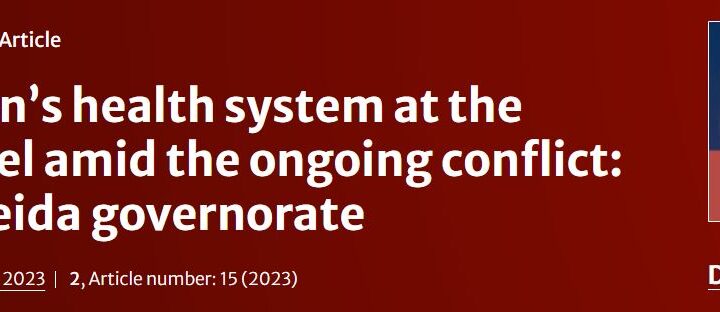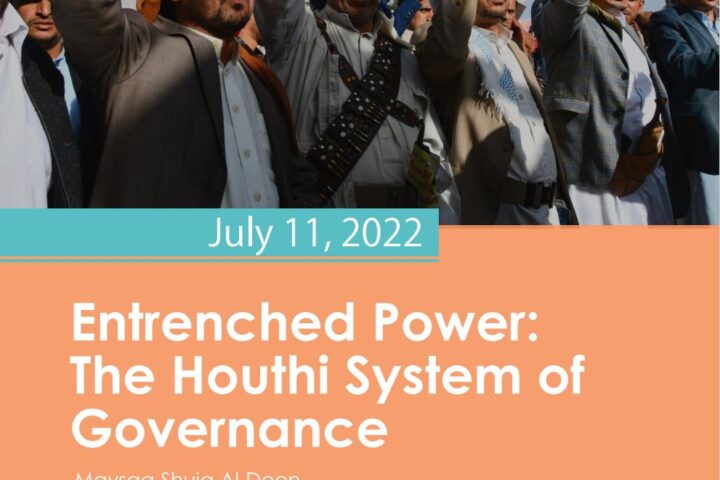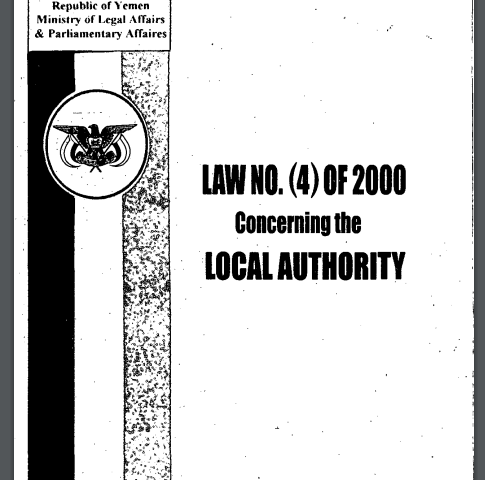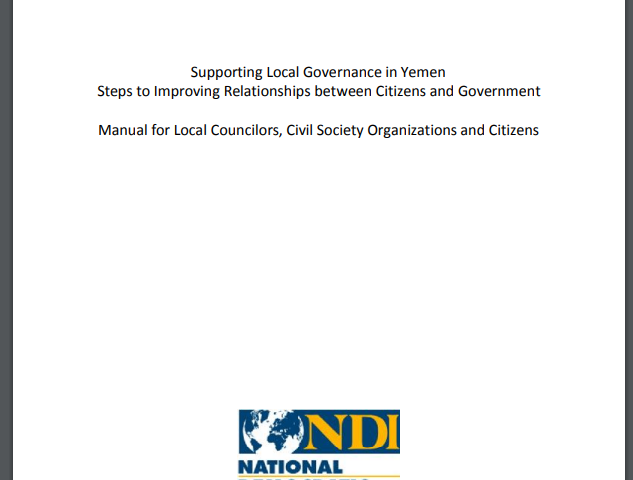The Governorate of Al-Hodeidah is located in the far west of the Republic of Yemen along the Red Sea coast. It is 226 kilometers west of the capital city of Sana’a. The governorate is divided into 26 districts, and the city of Al-Hodeidah is the governorate’s capital. Al-Hodeidah port, alongside Aden port, is one of the main commercial ports of the country.
Al-Hodeidah governorate information
Map of Al-Hodeidah
Economy
Agriculture constitutes the main economic activity in the Governorate of Al-Hodeidah. The governorate is the biggest agricultural producer in the country, accounting for more than one quarter of total agricultural production. The most important crops produced in Al-Hodeidah are vegetables, fruits, and fodder. In addition, the Red Sea fisheries provide an important source of income to the governorate’s inhabitants. Al-Hodeidah is a transportation and trading hub, and import and export businesses belong to the governorate’s most important economic actors. Al-Hodeidah also hosts a number of industries, including the Bajil Cement Factory and food and drinks manufacturing. The most important minerals found in the governorate are granite, black sand, dyes, ceramics, rock salt, gypsum, and some other clay minerals. The governorate is famous for its historic, heritage, and tourism sites, in addition to sea tourism.1https://www.yemenna.com/index.php?go=guide&op=show&link=hodida.
Al-Hodeidah derived 91% of its 2014 budget from grants and central subsidies, while local revenues accounted for 9% of the budget – a comparatively high figure reflecting the economic importance of Al-Hodeidah port and large agricultural businesses in the governorate.2Please see the appendix for further information on these different types of revenue. The most significant sources of local income were local shared revenues and taxes, particularly zakat, taxes on goods and services, income, profits, and capital gains. There are also revenues from the administration’s sale of goods and services, as well as fines and penalties. These revenues were negatively affected by the war, which has closed the port to all but humanitarian traffic, causing major economic challenges for the governorate.3epublic of Yemen, Ministry of Finance, Budget Sector: estimated local authority budget for the 2014 fiscal year. The establishment of a central zakat body in areas under the control of the de facto authorities and the transfer of zakat revenue to a central revenue has also caused the governorate to lose a very important source of income.
According to the 2014 Households Budget Survey, 58.1% of residents of the governorate were under the poverty threshold. Since Al-Hodeidah has been a site of active fighting with hundreds of thousands displaced, this rate has dramatically increased during the past few years of the war. Current estimates suggest that the poverty rate may well have reached 80-90% in the governorate.4Interview with senior executive bureau official in Hodeidah. March 2019. The Interim Food Security Classification for 2019 ranks Al-Hodeidah as the governorate with the highest levels of poverty in Yemen.
Local governance
The local council of Al-Hodeidah consists of 26 councilors and the governor. Two councilors have died, and three are abroad for political and security reasons. This leaves 21 currently active members. During the first three years of the war, the local council’s work was limited and irregular, but meetings took place on an ad hoc basis. The administrative board of the council continued to perform its tasks regularly during the first three years of the war. However, as fighting in the governorate escalated, the local council’s work was disrupted and the governorate came under rival administrations. As the security situation worsened in the city, the administrative board suspended its work and was no longer able to meet. The same is true of the executive offices, most of which had been functional during the first three years of the conflict, but which suspended their work when fighting reached Al-Hodeidah City. Some executive offices continue to function at a minimum level, relying on funding from donor organizations, especially in basic services such as health, education, and sanitation.5Interview with senior executive bureau official in Hodeidah. March 2019.
Access to basic services
According to OCHA 2.33 million people are in need of assistance in Al-Hodeidah in 2022, or nearly 72% of the population. Out of these, 66% are in acute need.6https://data.humdata.org/dataset/yemen-humanitarian-needs-overview, 2023 People in Need in Yemen
Fighting in Al-Hodeidah exacerbated the humanitarian situation in the governorate and led to mass displacement. Between June and October 2018, nearly 425,000 people were forced to flee their homes. Since the beginning of the war, almost 10,000 people have been killed in Al-Hodeidah,7https://www.acleddata.com/2019/06/18/yemen-snapshots-2015-2019/. and in January 2019, the number of displaced persons in Al-Hodeidah likely reached close to one million people.8World Health Organization, Situation Report: December 2018 & January 2019, Yemen Conflict, p. 2. Currently, Al Hodeida hosts an IDP population of 563.000 (status December 2022).9https://data.humdata.org/dataset/yemen-humanitarian-needs-overview, 2023 People in Need in Yemen
Eleven health facilities in the governorate have closed, and large numbers of doctors have left the governorate due to lack of salary payments and the deteriorating security situation. Even nominally functioning health facilities were working at minimum capacity.10OCHA, Yemen: An update on the Governorate of Hodeidah, situation report No. 13, 2-15 October 2018, p. 1. Health services provided in hospitals and health centers rely mainly on support by donor organizations.11Interview with senior executive bureau official in Hodeidah. March 2019.
Al-Hodeidah is one of the governorates where teachers’ salaries were not being paid for several years, though some salary payments resumed in 2019.12Economic Studies and Forecast Sector in the Ministry of Planning and International Cooperation, Economic and Social Development In Yemen Newsletter, Issue No.30, December 2017. In addition, at least 21 schools have been damaged by the war.13OCHA (An Overview of the Humanitarian Needs in Yemen 2018). This has disrupted education. Many households fear sending their children to school for security reasons, and the displacement of many teachers from the city to other areas has led to staff shortages.14OCHA, Yemen: An update on the Governorate of Hodeidah, situation report No. 13, 2-15 October 2018, p. 1. Since the Stockholm Agreement, a de-escalation of the military situation and the resumption of salary payments to teachers in the governorate by the Hadi government has contributed to a gradual return to normal operations.15Interview with one of the leaders of the executive bureau, Hodeidah. March 2019.
As for drinking water, 88% of households in Al-Hodeidah governorate had access to potable water in the year 2016/2017.16OCHA: An Overview of the Humanitarian Needs in Yemen 2018. This percentage declined sharply due to the military escalation during 2018. Donors are working with local corporations to support sewage treatment, rehabilitation of wastewater collection, transportation of water by tankers, installation of water tanks for public access, building emergency latrines, and distributing hygiene supplies and water purification to IDP households in Al-Hodeidah.17UNICEF, A report on the humanitarian situation in Yemen, October 2018, p. 5 & 7.
Demographics
| District | Size (km2) | Population (Female) | Population (Male) | Population (Total) |
|---|---|---|---|---|
| Az Zuhrah | 776 | 109,299 | 114,408 | 223,707 |
| Al-Luheyah | 1,299 | 86,767 | 91,900 | 178,667 |
| Kamaran | 107 | 2,153 | 2,341 | 4,494 |
| As Salif | 154 | 3,914 | 4,327 | 8,241 |
| Al Munirah | 640 | 29,462 | 31,177 | 60,639 |
| Al Qanawis | 387 | 57,859 | 61,164 | 119,023 |
| Az Zaydiyah | 500 | 78,286 | 84,060 | 162,346 |
| Al Mighlaf | 170 | 33,611 | 35,533 | 69,144 |
| Ad Dahi | 246 | 43,907 | 46,342 | 90,249 |
| Bajil | 1,645 | 143,838 | 149,679 | 293,517 |
| Al Hajjaylah | 104 | 9,192 | 9,093 | 18,285 |
| Bura | 242 | 41,017 | 36,732 | 77,750 |
| Al Marawi’ah | 746 | 116,176 | 120,477 | 236,653 |
| Ad Durayhimi | 695 | 8,349 | 9,037 | 17,387 |
| As Sukhnah | 379 | 64,305 | 65,064 | 129,369 |
| Al Mansuriyah | 194 | 47,689 | 48,639 | 96,328 |
| Bayt Al Faqiah | 1,529 | 188,612 | 201,970 | 390,582 |
| Jabal Ra’s | 410 | 37,866 | 34,939 | 72,805 |
| Hays | 262 | 6,191 | 6,030 | 12,221 |
| Al Khawkhah | 557 | 33,329 | 35,107 | 68,436 |
| Al Hawak | 62 | 35,240 | 40,467 | 75,707 |
| Al Mina | 17 | 17,086 | 19,783 | 36,869 |
| Al Hali | 102 | 30,345 | 34,550 | 64,896 |
| Zabid | 585 | 141,783 | 147,505 | 289,287 |
| Al Jarrahi | 628 | 62,887 | 61,782 | 124,670 |
| At Tuhayata | 813 | 35,968 | 39,094 | 75,061 |
| TOTAL | 13,249 | 1,465,130 | 1,531,204 | 2,996,334 |
Figures are based on the 2021 Humanitarian Needs Overview Yemen, OCHA. Population figures include the number of IDPs and residents.






